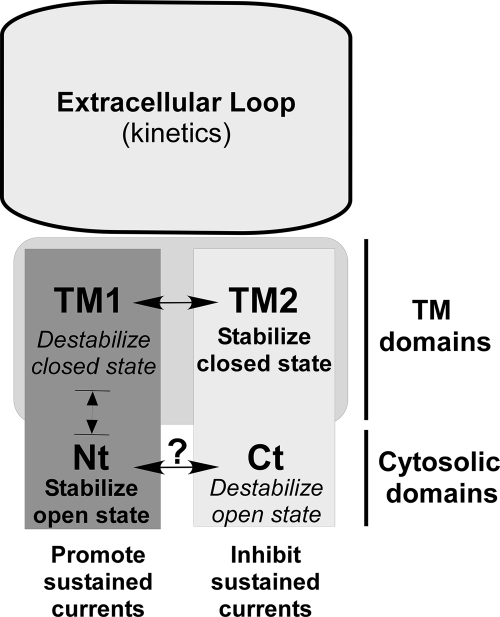FIGURE 6.
Model summarizing the influence of the transmembrane and cytosolic domains on ASIC3 gating. The extracellular loop does not significantly contribute to the generation of the sustained current but is central for determining the inactivation kinetics of both the transient and sustained currents. The TM1 and N-terminal (Nt) domains are the key structural elements generating the sustained currents, whereas the C-terminal (Ct) and the TM2 domains act as negative regulators. Our data suggest that TM1 and TM2 participate in the gating of ASIC3 essentially through stabilization (TM2) or destabilization (TM1) of the closed state, whereas the cytosolic domains (Nt and Ct) act via stabilization (Nt) or destabilization (Ct) of the open state. The structure and the organization of the cytosolic domains are not known, and it is not clear whether these domains can interact with each other. They can be affected by post-translational modifications (31, 32), associated proteins (27, 33–35), or variation in the intracellular pH (36), with important consequences on the gating of the channel.

